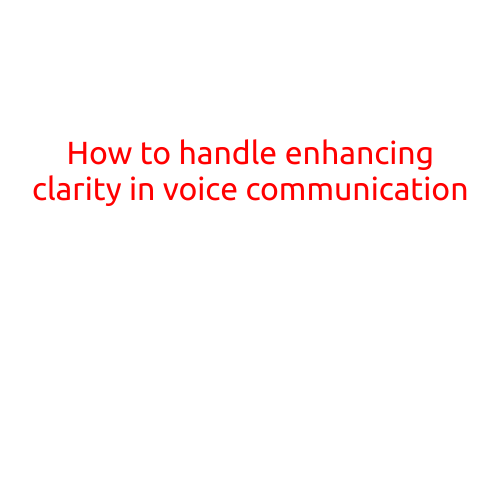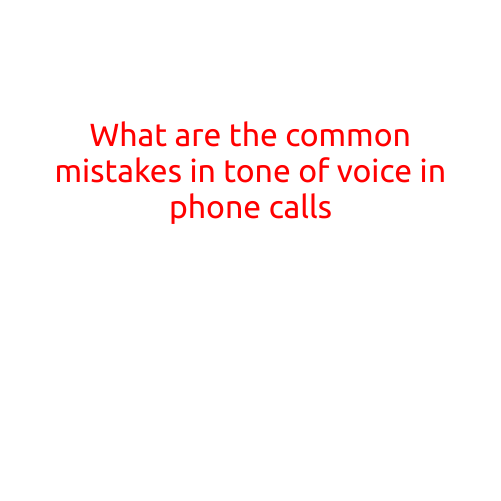
How to Handle Enhancing Clarity in Voice Communication
Effective voice communication is a crucial aspect of personal and professional relationships. In today’s fast-paced world, being able to convey your message clearly and concisely is essential to avoid misunderstandings and achieve successful outcomes. However, maintaining clarity in voice communication can be a challenging task, especially when dealing with diverse audiences, noisy environments, or technical issues. In this article, we will explore ways to enhance clarity in voice communication, enabling you to communicate effectively and efficiently.
1. Choose the Right Words
The first step to enhance clarity in voice communication is to choose the right words. Use simple and concise language to convey your message. Avoid using jargon, technical terms, or complex sentences that may confuse your audience. Instead, opt for clear and easy-to-understand words that get your point across effectively.
2. Enunciate Properly
Proper enunciation is vital to ensure your message is conveyed clearly. Enunciate each word correctly, paying attention to the stress and intonation. Speak slowly and deliberately, allowing each word to be heard clearly. Avoid mumbling or speaking too quickly, as this can lead to misunderstandings.
3. Avoid Distractions
Background noise or distractions can significantly impact the clarity of your voice communication. Identify potential distractions, such as noisy surroundings or technical issues, and take steps to minimize them. Use noise-cancelling headphones, find a quiet space, or request a private room to ensure a clear and uninterrupted conversation.
4. Repeat and Clarify
Repeating what you’ve said and clarifying any doubts can significantly enhance the clarity of your voice communication. After delivering a message, politely ask if the other person understands what you’ve said. If necessary, rephrase your message or provide additional clarification to avoid any confusion.
5. Use Nonverbal Communication
Nonverbal cues, such as facial expressions, body language, and tone of voice, can convey just as much information as spoken words. Use nonverbal communication to emphasize key points, show enthusiasm or empathy, and build rapport with your audience.
6. Practice Active Listening
Active listening is a critical component of clear voice communication. Pay attention to what the other person is saying, and acknowledge their message with nods or verbal cues. Ask open-ended questions to encourage the other person to provide more information, and paraphrase what they’ve said to ensure understanding.
7. Record Yourself
Recording yourself speaking can help you identify areas for improvement in terms of clarity, tone, and delivery. Listen to your recordings, making note of any words or phrases that are difficult to understand or might be misinterpreted.
8. Seek Feedback
Seeking feedback from others can help you refine your communication skills and enhance clarity. Ask your colleagues, friends, or family members to provide feedback on your communication style, and be open to constructive criticism.
Conclusion
Enhancing clarity in voice communication requires a combination of effective verbal and nonverbal skills, attention to distractions, and a willingness to adapt to different situations. By following these tips, you can improve your communication skills, build stronger relationships, and achieve greater success in both your personal and professional life.
Additional Tips
- Speak at a moderate pace to allow listeners to absorb your message.
- Use vocal inflections to convey emphasis and tone.
- Avoid using filler words like “um” or “like.”
- Practice mindfulness to reduce stress and improve your overall communication skills.
- Consider taking a communication course or workshop to enhance your skills.
By implementing these strategies, you can enhance the clarity of your voice communication and achieve greater success in all areas of your life.





